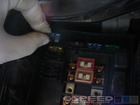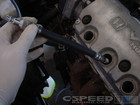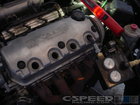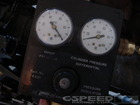Leak Down Test
Whether your motor is stock, mildly built, or fully built, knowing the health of your motor is vital to the longevity of it. Not only is it important to take care of your motor by regularly changing the oil and filter, spark plugs, etc. But it is also important to know how well the engine is performing mechanically by doing a compression and leakdown test. A compression test will tell you how well the engine makes compression and whether or not everything is sealing correctly on the compression stroke as far as the rings and valves are concerned. However you can have a very good compression result but still have poor leakdown results. Leakdown will tell you if and where you may have a potential problem in either your piston rings, valves or headgasket where the compression test cannot.
A typical leak down test tool is approximately $60USD.
Read about how to do a Compression Test.
|
 |
 |
Before starting, you will want to pull the ECU fuse out from the fuse box under the hood to prevent and fuel from spraying when you crank the engine over during the test. It is the 15A fuse labeled ECM/FI on the fuse box. Remove all the spark plugs. Using a socket wrench on the crank pulley, turn the motor over until cylinder #1 is at TDC (top dead center) and install the leakdown tester on cylinder #1. |
 |
 |
Once the leakdown tester is installed on cylinder #1, connect the hose to the gauges and apply compressed air to the cylinder. Turn the adjustment knob until there is 100psi on the input gauge. |
 |
 |
The actual leakdown result can be read off the second gauge. As you can see in the first picture, there is about 8% leakdown on cylinder #1. Anywhere from 0%-10% leakdown is acceptable. Typical readings are around 2%-6% leakdown. As seen on the second picture, there is 80% leakdown on an adjacent cylinder (#3). Something is definately wrong with cylinder #3. In this case, listen to where the air is leaking from. If it is leaking from the bottom end, then the rings are shot. If you open the throttle plate and hear air escaping, then the valves are bent. Otherwise, if you remove the radiator cap and air bubbles appear in the coolant, then your headgasket is blown. |
|